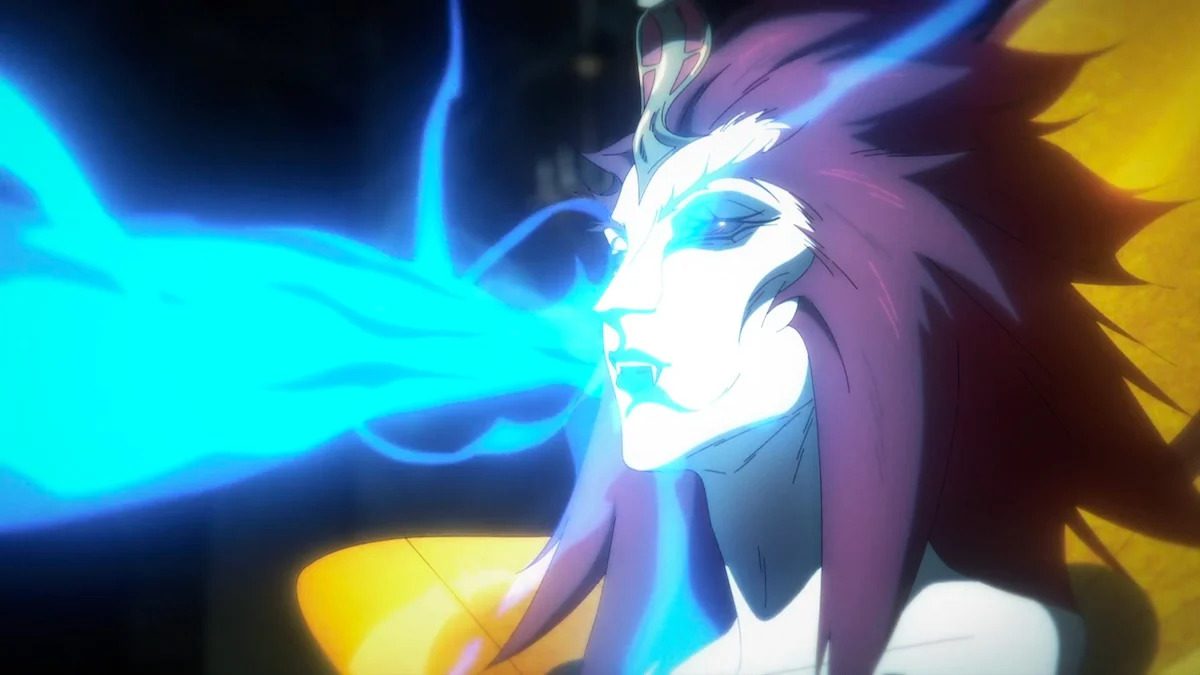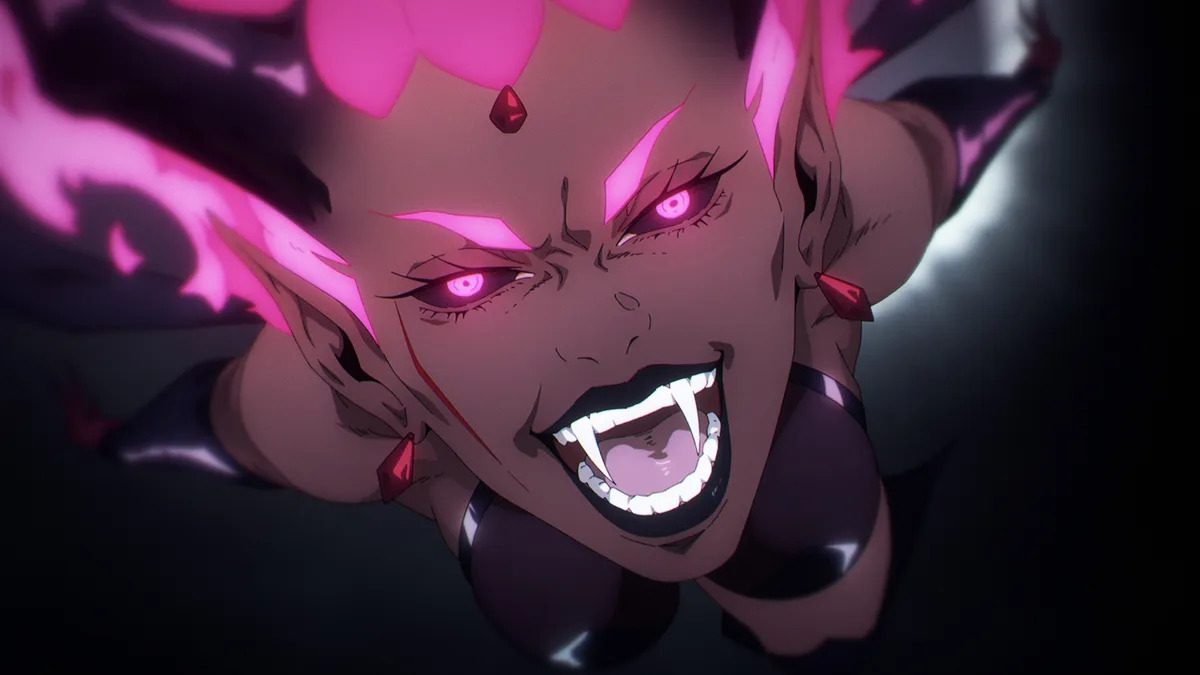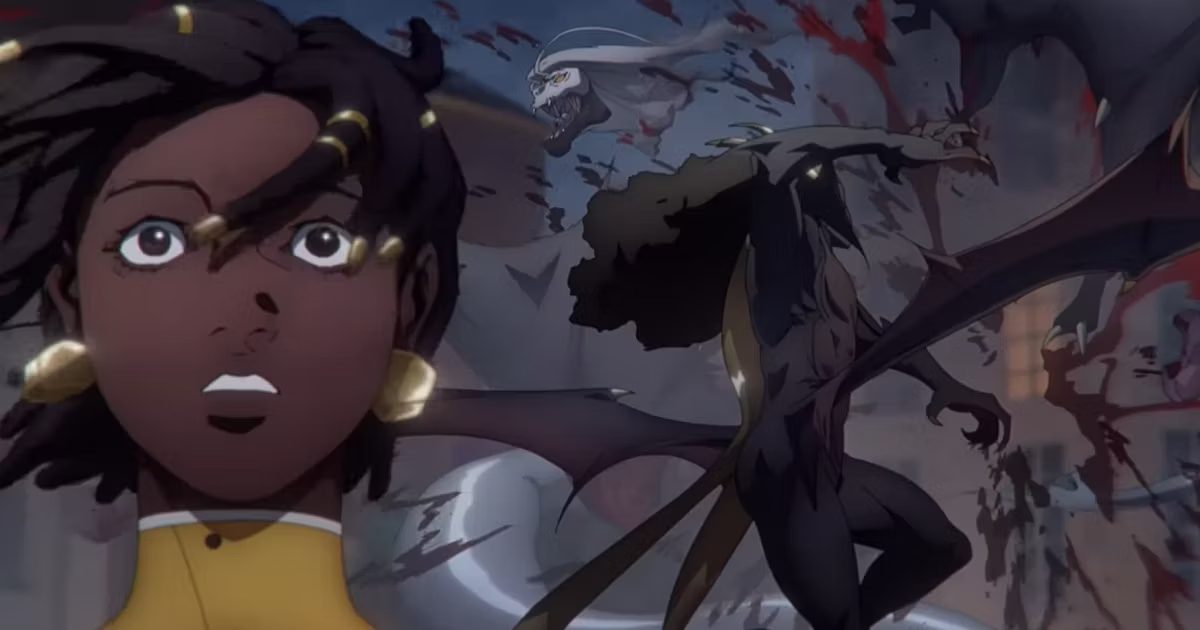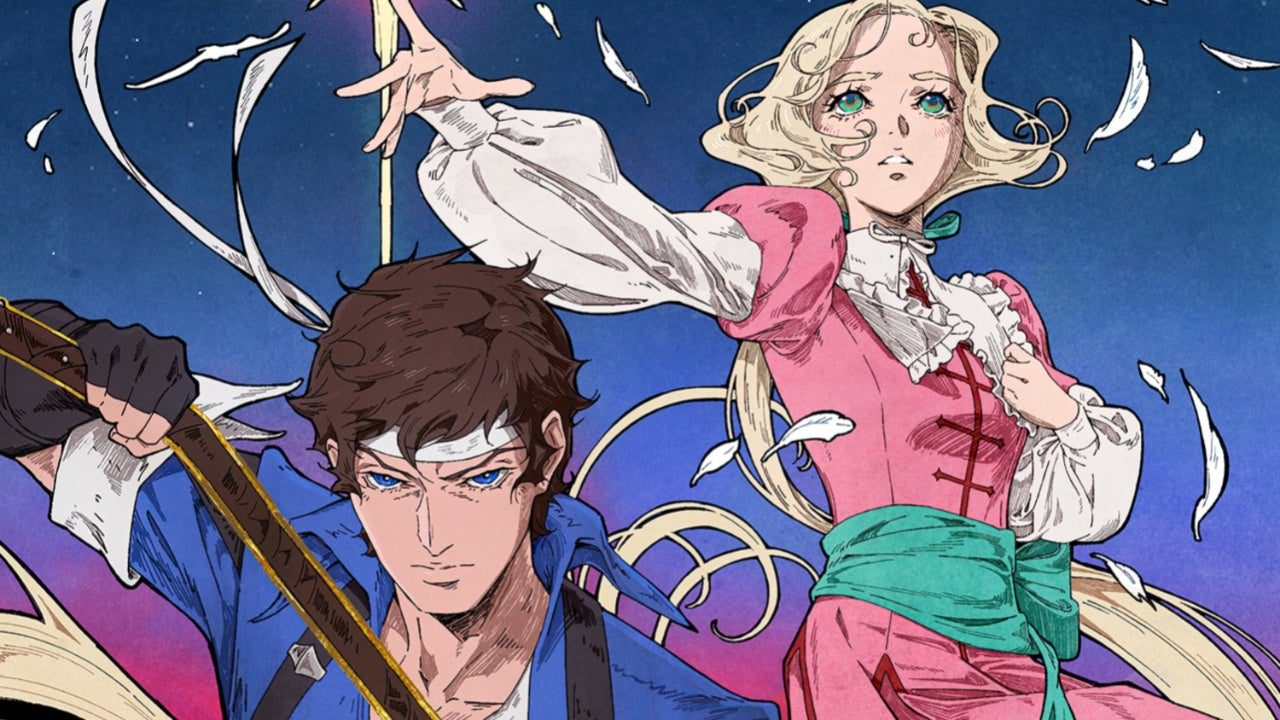REVIEW: Castlevania: Nocturne Season 1 (2023)
Set three centuries after the events of the previous series amid the French Revolution, Castlevania: Nocturne follows young Richter Belmont as a new evil rises in Europe. Aided by his adoptive Renard family, Tera and Maria, and magic-user Annette from the island of Saint-Domingue, Richter is faced with one known as the Vampire Messiah. Add to the mix the usual church corruption, night creatures, and the same vampire who murdered Richter’s mother. Can this mismatched band of powerful outcasts save the world before it’s too late?
***SPOILERS***
I watched Nocturne because I loved Netflix’s first Castlevania series so much. It’s probably my favorite American animated series since Avatar: The Last Airbender over a decade earlier, and definitely my favorite since then if we exclude Star Wars animation. After seeing that show, I dabbled with Castlevania: Rondo of Blood and Symphony of the Night, but I’m not much of a gamer, and I’m ashamed to admit I struggled to figure out the mechanics, so my Richter just got killed over and over. I say this to clarify that I’m far from an expert on the games, so I won’t do much in the way of comparing Nocturne to them. That first series, with its gripping action sequences, insane animation, and shockingly thoughtful philosophical dialogue, is my main point of reference.

I like Richter’s character design, for the most part. He looks much like his mother, Julia, whom we only see in the first episode. He also resembles Trevor from the first show, and his costume is pretty faithful to the games and reminds me of Sypha’s in the first series as well. My only gripe is subjective: sometimes, the way his eyes are animated creeps me out. It usually happens when these lines appear on his face and his eyes dilate. It’s not when he accesses his magic powers later on; that is awesome. This is the epitome of a nitpick, but the animation is generally outstanding. It better be, after the insane visual feats the first show achieved as it went on. Maria also looks pretty faithful to her appearance in Rondo of Blood, although, from my understanding, they’ve beefed up her character. She still becomes a damsel in distress, which doesn’t bother me like it does some people. The biggest point of contention I’ve seen, visually speaking, is with Richter’s love interest, Annette. She was a regular white girl in the games, but here, she’s a freed slave from the French island colonies who can channel magic and claims to be descended from a god. Yes, that’s a lot. I don’t feel strongly about her character design, although I prefer longer hair on women. Annette is pretty and, by default, very distinct from the rest of our heroes. I have issues with Annette’s characterization, but I’ll get back to it. However, I dislike the look of some of our villains here. For some reason, my brain can accept vampires in 18th-century France but draws the line at stillettos, women in pants, and bronze, boob-shaped breastplates with midriffs. Erszebet Bathory and her henchwoman Drolta look ridiculous to me, especially near the end when Bathory becomes an Egyptian goddess (you read that right), and Drolta turns into what I can only describe as a Succubus from World of Warcraft. I understand they’re supposed to be intimidating and otherworldly, but Carmilla and Dracula pulled this off without dressing like they were headed to a BDSM dungeon party. I don’t mean to harp on this, but it dragged me out of the experience. In contrast, Olrox’s clothing is refined and establishes him as above everyone else. His calm demeanor is far creepier than Drolta’s bloodlust and Erszebet’s transformation into a cat-like creature.

I enjoy Olrox a lot in general. He’s centuries old, like the other vampires, hailing from the Aztec Empire. He’s voiced by Zahn McClarnon, who I swear can do no wrong; this man is awesome in everything he does. Olrox seems to have principles, although it’s unclear what they are. He won’t stand up to Erszebet, saying he doesn’t have the power to face her. But he opposes her voyage to and conquest of the Americas. This likely has to do with his heritage, and that of his Mohican lover Julia killed, spawning his quest to destroy her and Richter. I loved how this played out, with the warring factions being forced to work together against Erszebet. I wish she were more interesting to warrant the focus. I will say I didn’t like it when Juste, Richter’s surprise grandfather, implied Olrox is scarier or more dangerous than Dracula. No, thank you. Richter’s characterization is handled well, too. He hits a low point and rises back up to achieve greater power, which is always great to see. He’s surrounded by female companions, and he’s very young, which set off alarm bells in my head. I was afraid Annette or Maria would show up Richter, but he holds his own, and by the end, he’s a force to be reckoned with. I can’t wait to see what they do with him down the line. I mostly liked Tera and Maria, even if the latter can be bratty and self-righteous. It is difficult to accept such a young child as a revolutionary spouting off about the war and people’s rights, but you get used to her after a while. Annette’s friend Edouard is another major player. He’s a singer who used his fame and influence to help slaves like Annette. He has the misfortune of being turned into a night creature, which leads to an interesting divergence from the first show. These night creatures are individuals, like Flyeseyes from the first show. He was unique in that regard, but no longer, it seems. Edouard uses his song to appeal to the other night creatures created by the Abbott, who we learn is Maria’s father, Tera’s former lover. I saw this coming, but it’s very effective emotionally and certainly affects the characters. I’m surprised Maria never picked up on the hint, as her mother, Tera, always jumped to the Abbott’s defense whenever she or Richter criticized him.

Erszebet, as you may know, is based on one of the world’s first known female serial killers, Hungarian countess Erszebet Bathory. Erszebet, in real life, used her power and status to subjugate, torture, and kill peasant girls and, later, noble daughters. She’s a fascinating and terrifying figure, reminding us that regular humans can do some of the most horrifying things to one another for no real reason. We may cower to vampires and night creatures, but our world breeds killers and monsters who look just like you and me. Nocturne’s take on this woman pales in comparison. She looks and acts like a second-rate video game boss, making speeches about being the messiah and the Egyptian Goddess Sekhmet. They may explain her motivation and backstory in future seasons, but at least for now, she and Drolta are pretty lame. They say a hero is only as interesting as the villains they face, and these ladies do a lot to let Richter and the audience down.

Mizrak, one of the Abbott’s followers, is surprisingly complex. He’s a warrior monk, protecting the Abbey from evil in all its forms. However, he’s either gay or bisexual, as he engages in a tryst with Olrox. I know there have been gay priests in real life, and I’m sure there are some now. Maybe they’re closeted, or perhaps they joined the Church thinking it would control their urges or whatever. But I find it interesting that he does this and never questions its impact on his faith. This isn’t a complaint; it’s just something I found unusual and surprising. Mizrak also furiously opposes Maria’s sacrifice to Erszebet and is the only one of the Abbott’s followers who repents, praying to God for forgiveness once he realizes what he has plans. Mizrak ultimately joins Richter and the women in fleeing the city to fight another day, leaving poor Tera with Erszebet.

I prefer the overall look of Castlevania’s later seasons, but Nocturne looks crisp and fluid, and I like most of the character designs. Shots of nature’s beauty stand out, like the dandelions in episode 5, “The Natural Order,” and the fireflies outside Juste’s house. This show wears its politics on its sleeve more than the original. This comes in-universe in the form of the Revolution, which makes sense, although I quickly got tired of people chanting the famous “liberty, equality, fraternity.” It may have been less cringy if they did it in French, but I’m not sure. Repeated phrases sometimes get on my nerves especially badly, and I’m willing to accept I may just be unreasonable in that regard. The music is beautiful, bringing back composer Trevor Morris, who has help this time around. Some closing thoughts here: the whole meeting with Juste and his revelation is glorious. This legitimately made me emotional, and I loved it when he told Richter he should have taken better care of the whip and mentioned Sypha. Isaac was also a former slave, but his backstory, goals, and personality were so entertaining and multi-faceted that I can’t help comparing Annette unfavorably to him. Really? You’re the descendant of the gods? I think it’s too much, just like Erszebet turning into one. Annette’s lack of empathy for Richter when Olrox came for him disgusts me. She says something like, “If you run from your past, you’ll never be free of it.” I agree, but this is the guy who killed his mother. I’d run, too. She compares his struggles to hers as a former slave, basically saying he has first-world problems or whatever. I would think someone who had been through so much would have more compassion for the struggles of others rather than taking the opportunity to play “Who’s got it worse?” Of course, aside from their background, Annette and Isaac have nothing in common. But why did they change her backstory to be so much like his? They’re both embittered by their mistreatment, but for Isaac, this led to one of the best character arcs I’ve ever seen. Annette has time to improve, but thus far, I’m not impressed. Finally, it floored me when Alucard showed up, slicing Drolta like salami and saving the heroes. What a way to end the season. I’m on pins and needles to see more of him in future seasons, and his brief appearance here is awesome.

Castlevania: Nocturne has a lot to live up to. Its predecessor flipped the script on adult animation, raised the bar for video game adaptations, and showed what television animation can really do. Going in, I found myself questioning whether Nocturne could stand up to the first show, and in short, the answer is no. It’s more complicated than that, of course; I’d say season 1 of Nocturne is better than season 1 of Castlevania, which was feature-length altogether and focused on horror and action more than characterization. But this season can’t compare to any of Castlevania’s other three seasons, which had the same amount of time as Nocturne season 1 and told one of the most emotionally affecting, thought-provoking stories I’ve seen in years. The characters of Nocturne don’t have fascinating belief systems or shattered family legacies to reassemble. Annette seems to hate people as much as Isaac did, but she’s praised and “yass queen’d” for it rather than taught a poignant lesson. To make a very long story short and to paraphrase a much better story than this, Castlevania: Nocturne is the lesser son of greater sires. This show absolutely can improve, and with the presence of Alucard, I believe it will. I enjoyed Nocturne and plan on continuing with it, but don’t expect the best of Castlevania just yet, at least.
Castlevania: Nocturne Season 1(2023)
Plot - 7
Acting - 9
Progression - 7
Production Design - 9
Character Development - 5
7.4
Okay
Castlevania: Nocturne is something of a letdown, but not a catastrophic one. This show may get better with time, but for now, it's no match for the original.







